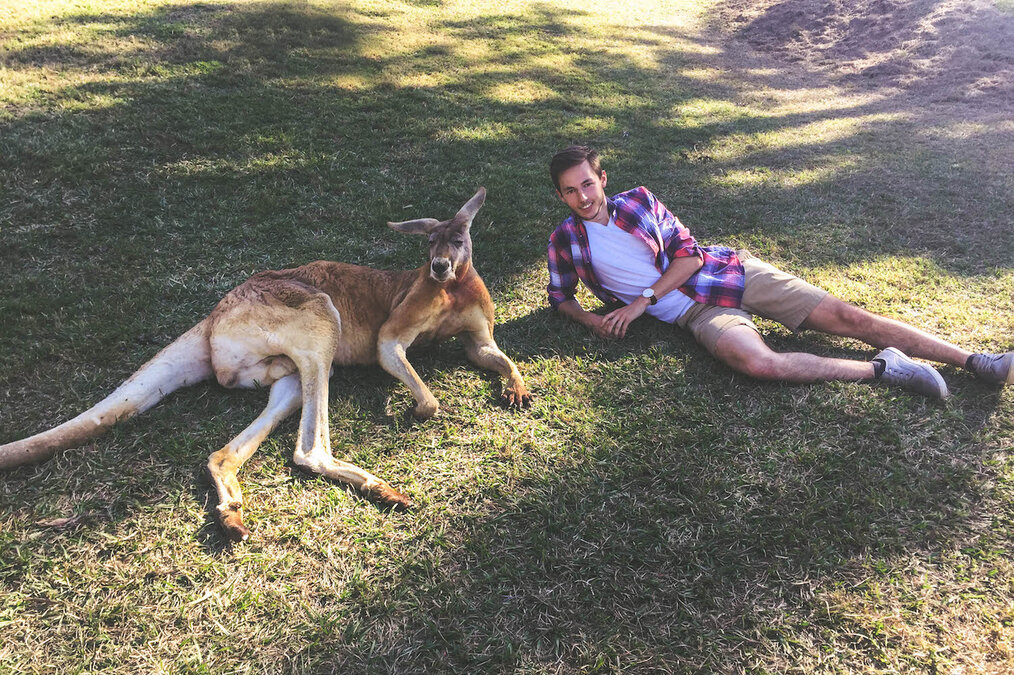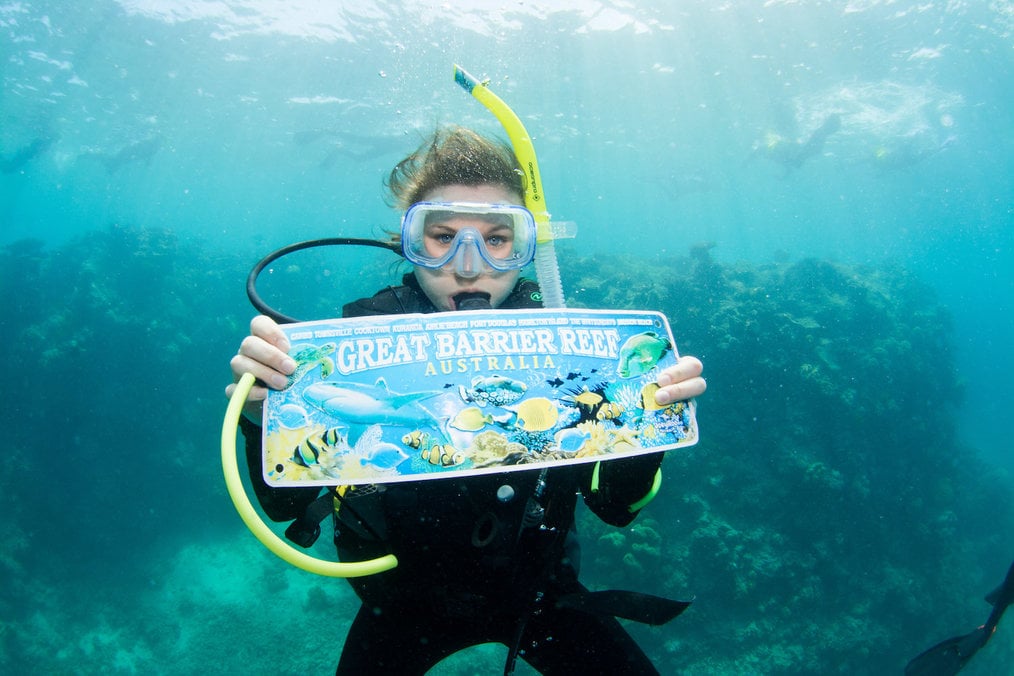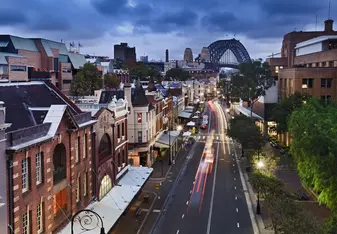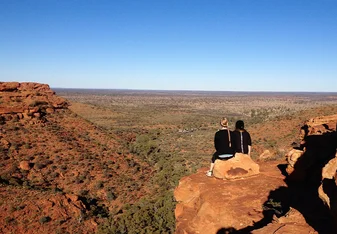How Much Does it Cost to Study Abroad in Australia?
Studying in Australia doesn't have to break the bank. Read about our breakdown of tuition, living expenses, travel expenses, and more to help plan your study abroad budget.

If you've chosen to study abroad in Australia, you picked a fantastic location. Whether you're dying to explore the Great Barrier Reef, find yourself fascinated with Indigenous Australian history and culture, or just love relaxing on the beach -- there's something for everyone and you're sure to have an amazing experience. However, you might find yourself wondering just how much will this experience will actually cost.
The first thing you should look into would be your institutional expenses such as tuition, room and board, and application fees. After you figure these expenses out, you can begin looking into other things, such as food, transportation, entertainment, and travel. A lot of these expenses will certainly vary from person to person, but this article will guide you in the right direction to gain some form of understanding of what you should expect to pay for certain items and experiences.
Average Tuition Cost for a Semester in Australia
It is entirely possible to pay less than $4,000 for your tuition to study abroad in Australia. If you have the opportunity to study abroad through an exchange program at your home university, and your tuition expenses are relatively low (listen up, in-state students), I highly recommend this option. Through a university exchange program, you could potentially continue paying the same tuition to your home university while you study abroad. For example, I enrolled in the Direct Exchange program offered by my university. Through this program, I continued paying the same in-state tuition, $3,800 per semester, to my school rather than paying tuition to the institution overseas.
If your university does not offer an exchange program, or if your tuition expenses are a lot higher, then you might want to consider either directly enrolling at an Australian university or going through a third-party provider.
Read more: Should You Study Abroad Through Direct Enrollment or a Program Provider?
Listed are a few examples of popular universities and programs in Australia. All prices are in USD (not AUD).
Tuition for a Semester of Direct Enrollment Study Abroad at:
- University of Western Australia, Perth: depending on major, starts at $12,689 per term (2021)
- Macquarie University, Sydney: depending on major, starts at $12,458 per term (2021)
- Western Sydney University: depending on major, starts at $10,090 per term (2021)
- Griffith University, Gold Coast: depending on major, starts at $10,959 per term (2021)
Tuition for a Semester Abroad through a Third-Party Provider:
- CIEE College Study Abroad in Sydney, Australia: $19,450 per term (2022)
- IFSA: Study Abroad Programs in Australia, Monash University: $18,975 per term (2022)
- TEAN Study Abroad in Wollongong: $13,110 per term (2021)
- CIS Abroad at Bond University, Gold Coast: $17,690 - $18,990 per term (2022)
The Average Cost of Living in Australia

Housing
The average cost of living in Australia will greatly depend on your living arrangements. Some programs offer room and board included in the cost of the program, whereas others charge a flat rate and give you a monthly stipend for rent and food. Other students may be in charge of figuring out everything on their own.
If you decided to find housing on your own, you can expect the following average monthly rent prices for a one-bedroom apartment in the city center:
- Sydney: $2,002
- Melbourne: $1,293
- Brisbane: $1,289
- Adelaide: $1,095
While I studied abroad, I was given the option to make my own living arrangements and opted to live in the dorms at my host university. I paid the same room and board that the Australian students paid, which came out to be around $4,000 (USD) per semester. This was a great option for me because of the convenience. I lived on campus so I didn't need to worry about transportation, all of my meals were included in the price, and I was able to make lots of Australian friends and have fun.
Other international students elect to find housing off-campus, such as apartments or shared-housing units, while others opt for a homestay. A homestay in Australia will cost roughly the same as dorms on campus, around $4,000. Shared housing units can be cheaper, and possibly a better option for students on a tighter budget. At my host university, there was a student village close to campus that charged as low as $400 per month for a room. For one semester, this would cost you less than $2,000. The only inconvenience of this option is that you have to buy your own food and pay extra for utilities.
Daily Living Expenses
Besides room and board, you will have some other living expenses as well. Refer to the following table for an approximate cost of the following living expenses:
| EXPENSE | ESTIMATED COST |
|---|---|
|
Internet and utilities (if not included in room and board) |
$227 per month |
|
Meals (if not included in room and board) |
$15 – inexpensive meal |
|
Cell phone |
$25 - $40 per month Vodafone offers good (and cheap) prepaid packages for international students, such as 10 GB data with 500 minutes of international calls each month. |
|
Transportation |
$114 (monthly pass) $2-5 (one-way ticket within city) |
|
Personal expenses |
Gym, monthly fee: $50 |
|
Average night out |
Sydney: $41 |
Excursions |
Great Barrier Reef tour: starting at $86 |
|
Total |
Your total living expenses will depend on how often you go out to eat and drink. On the cheaper end, you could live on $5,000 for one semester. However, I would recommend budgeting closer to $6,000 - $7,000 just to be on the safer side. |
Source: Numbeo Australia, Oiyo
Airfare & Travel Costs

Flying to Australia is a long journey. I remember my trip home lasted nearly 30 hours between flights and layovers. Long-distance flights typically mean expensive prices, but there are some ways to spend less on your tickets. A round-trip ticket from the United States to Australia could cost you anywhere from $700-$2,500. As you can see, that is a huge difference in cost, so knowing where and when to buy your tickets is an important factor in the price you pay.
Earlier is better when looking for tickets. A lot of airlines offer sales throughout the year, so if you watch their websites for a few months, you are certain to come across a good deal on your flights. I like to use Google Flights, which is a new software introduced by Google that scans different airlines' websites and finds the best prices for your dates of travel. It also tells you prices for the dates around your departure if you have flexible travel plans. Another good option for finding the best prices is Skyscanner.
It is usually cheaper to fly into the bigger cities, such as Brisbane, Sydney, Melbourne, and Perth. If your school is located near one of these cities, consider flying in and booking a bus or train/tram for the remainder of your journey. I flew into Brisbane and was able to book a bus ticket for $25 for the two-hour ride to my host city Toowoomba.
Other Costs to Consider While Studying in Australia
The only other mandatory fees you should expect to pay are your student visa and health insurance. A student visa (student subclass 500) will cost around $400 and can be found on the Australian government website. This visa is nice because it allows you to work up to 20 hours a week as long as you are enrolled in university.
Overseas Student Health Cover (OSHC) is required for incoming international students into Australia. It should only cost you around $150-$250 for health coverage for one semester of study, so it is a fairly inexpensive fee. Your program or university will usually give you more information and assist you in applying for your health coverage.
After accounting for your necessary expenses, you can budget the remainder of your funds accordingly to accommodate any entertainment and travel expenses. I personally spent around $50-$70 per week on entertainment, and probably another $3,000 on travel expenses. Between these two, my personal expenses added up to around $4,000 for one semester.
A lot of people will tell you that a study abroad trip will cost you a ridiculous amount of money. While some programs alone will cost up to $20,000, it is still entirely possible to study abroad in Australia for less than $14,000 (tuition and room and board included)! A lot of programs, like the one I did, allow you to use your federal financial aid during your study abroad to fund things like tuition, room and board, and travel expenses. There are also tons of study abroad scholarships available for students wishing to go overseas, which are a big help in funding your experience.
If you are contemplating studying abroad in Australia, do some research to find a program that best fits your financial and educational needs. No matter the cost, you are bound to have an amazing experience studying abroad in Australia.
This post was originally published in October 2016 and was updated in June 2021.



